A final, final, final return – 24th April 2025
When we left the site at Salwick Old Hall in October 2025 it was with a mixture of regret and sadness. Tantalising fragments of the Old Hall had appeared but the apparent lack of real foundations were frustrating in trying to work out the basic structure of the hall. The semi-circular feature discovered during the geophys turned out to be of a modern (last 200 years) feature and not the longed for neolithic/bronze age feature. So that was that BUT when writing up the report no conclusions on the structure of the hall were missing. We had to return one last time.
On a beautiful April day, 8 members returned to perform the archaeologically unsound practise of “wall following”. A rope was put across the site and test pits put in at regular intervals looking of any form of foundations/in-situ brickwork.

Quickly we came down onto a single brick, wall layer mounted on a compressed, gravelly layer. This layer seemed to be acting as a foundation for any brickwork. In the above image, looking South, the wall peter’s out (or has been robbed out) after half a dozen bricks. In the E/W direction some bricks were uncovered but without structure.
From one of the previous digs we knew that just to the south of above photo was the cobbled, courtyard feature edged with a small brick wall. Further to the south, after 3 or 4 metres, the level dropped. In the lower area moles had been active but not in the slightly, raised up area – implying that brick or stone was impeding them. A trench was put in to investigate.
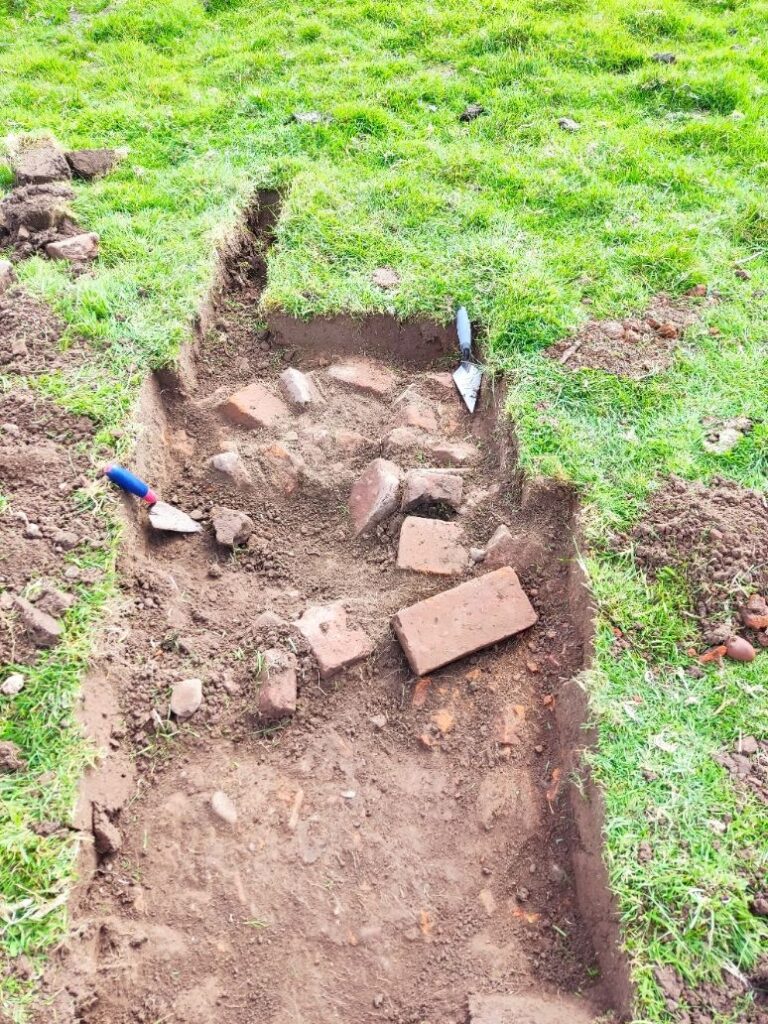
At the edge of this area tumbled brickwork appeared – again without proper foundation. Moving back towards the camera takes you back, via the cobbled area, to the hall itself. It appears that a perimeter wall defined the southern end of the site.
Conclusions. There were no “proper” foundations in a modern sense. A compacted layer of stone, gravel, clay and coal provided the basis of a simple, shallow brick structure. Presumably a wooden building (probably thatched) was built on that. Although shown on the maps as a “hall” perhaps it wasn’t quite as grand as the word implies.
Many thanks the Dave, Kev, Sian, Simon, Dawn, Maureen, Anne and Nic for their efforts.
23rd October – Closing Down?
A small group of diggers returned to close down the site. One or two questions still needed to be answered – specifically the dimensions of the site and the extent of the cobbled area.
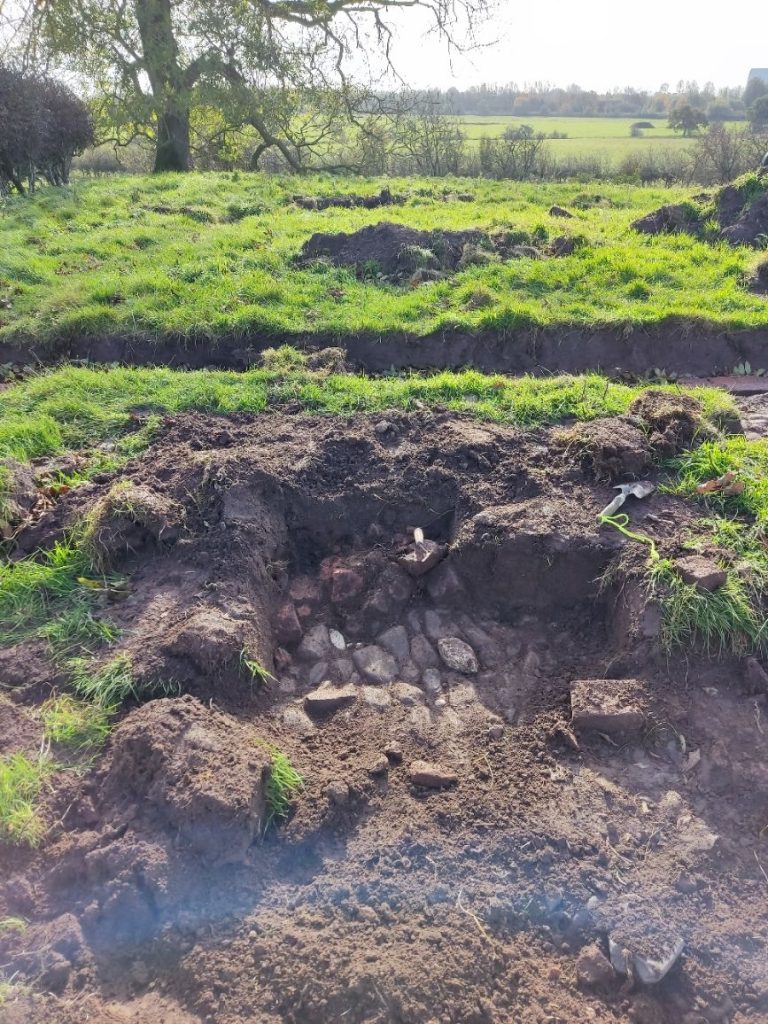
The above photo shows the cobbles continuing north from the southern wall. This was suspected and is now confirmed.
Three test pits were dug going south from the southern wall to confirm there was no extension to the hall in that direction. Although rubble in the form of bricks did continue for about 4 metres in that direction there was no structure.
The rest of the day was spent filling in trenches. This was particularly arduous because some of the spoil heaps had been created by the mechanical digger. This created extremely large and heavy turves.
5th October – Update
After a cold and windy start, a small group of diggers continued to try to find the extent of the Old Hall. Jenny opened up a small trench to the south of the trio of door jambs.
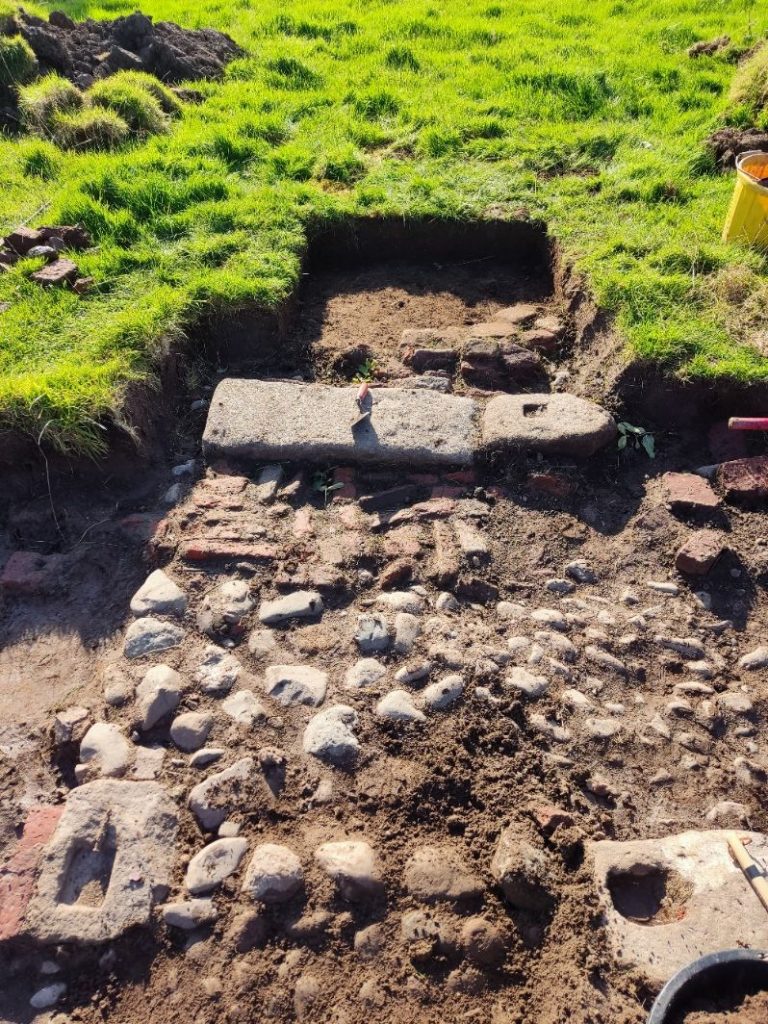
This appears to be the extent of the building to the south. Another sondage, further to the south seemed to confirm this.
The door jambs were obviously prone to movement. Several metal pegs had been used to stop this.
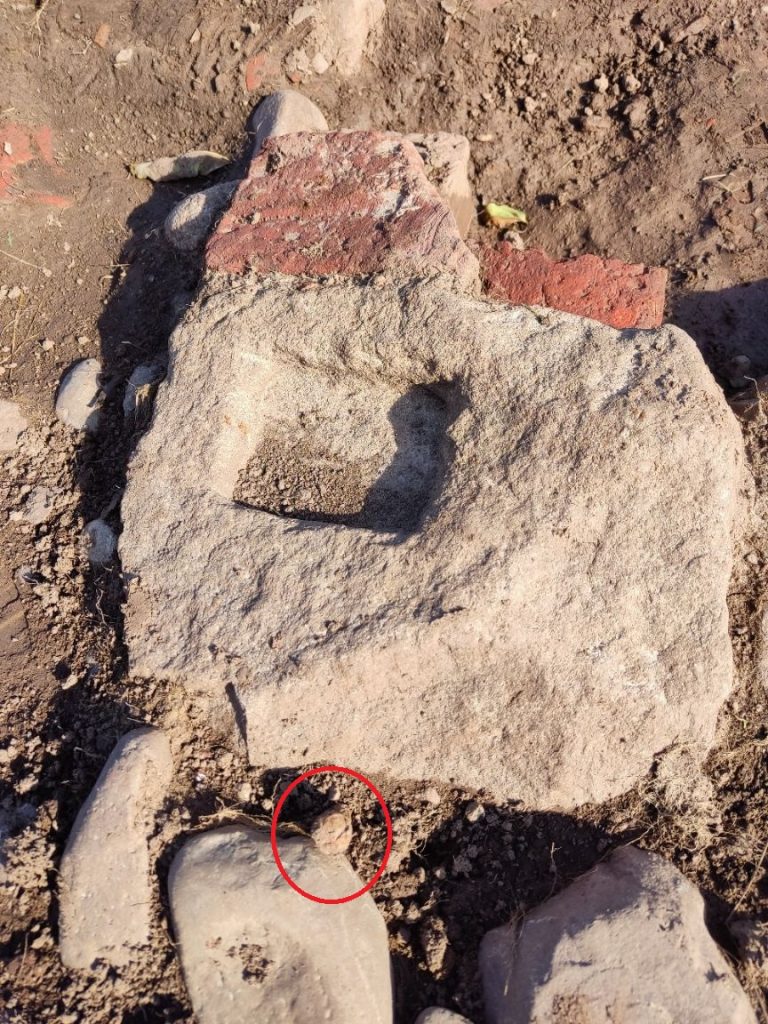
On the previous dig Dawn and Maureen came across brick tumble. Jenny continued to work on this area, trying to reveal if any brick structure could be found. As you can see, there was nothing obvious.
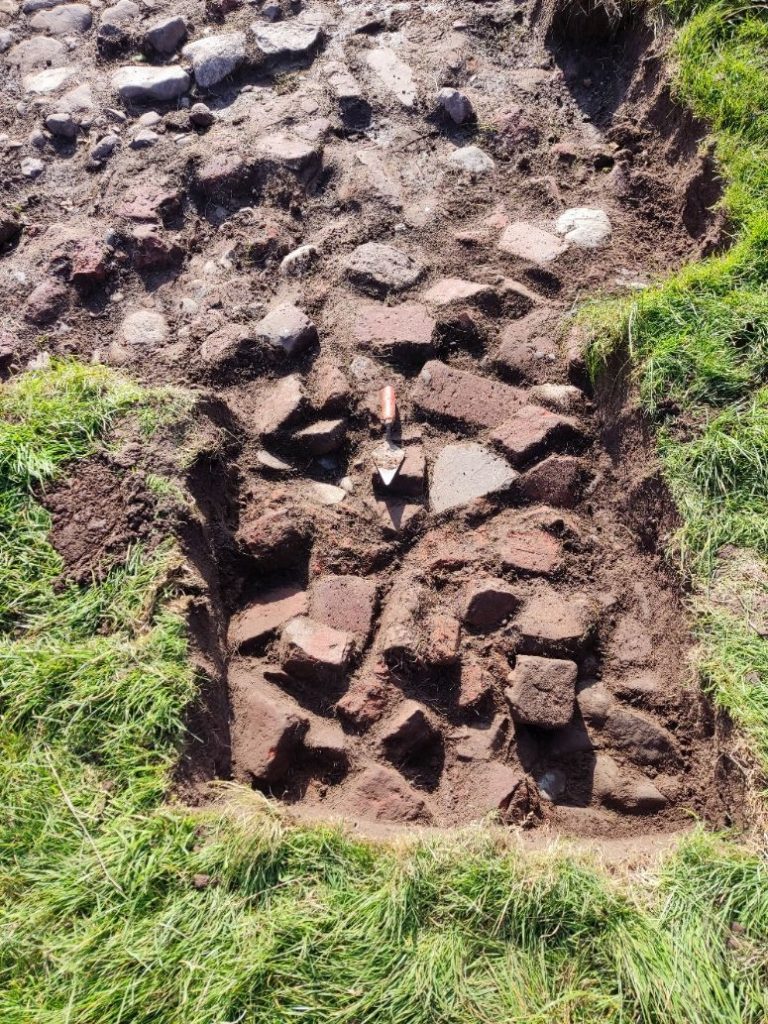
The tumble was removed to reveal even more cobbles.
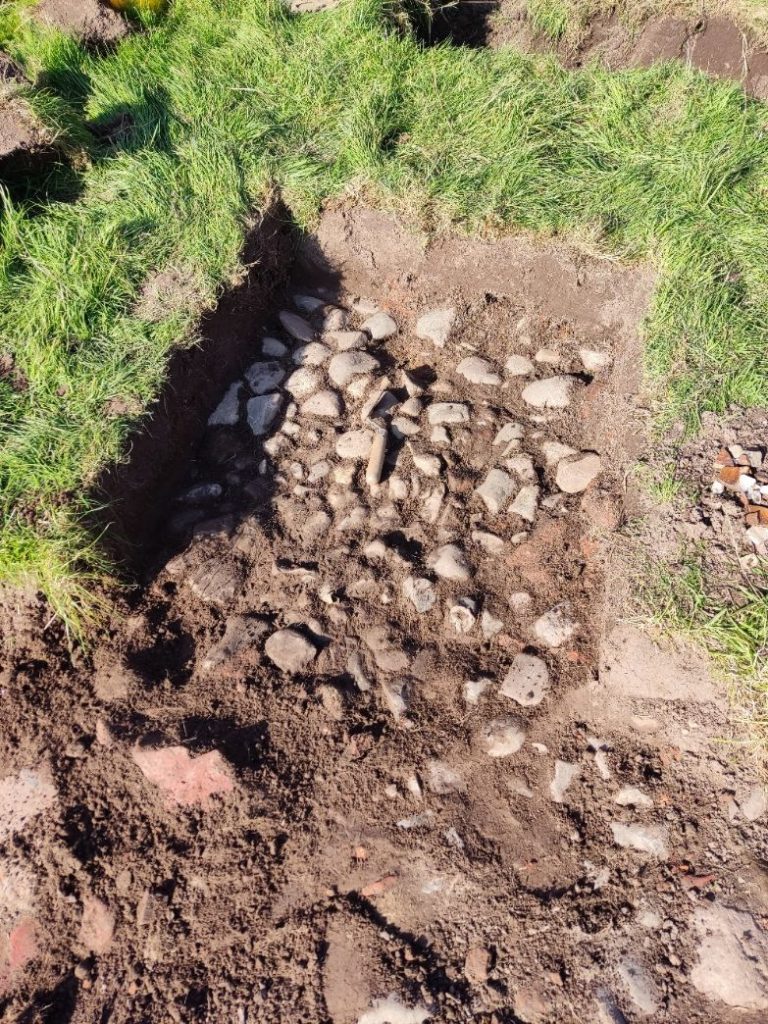
The same cobbled area appeared across the middle of the site. One strange effect noticed was the very significant change in level in this trench. Several centimetres in a couple of metres.
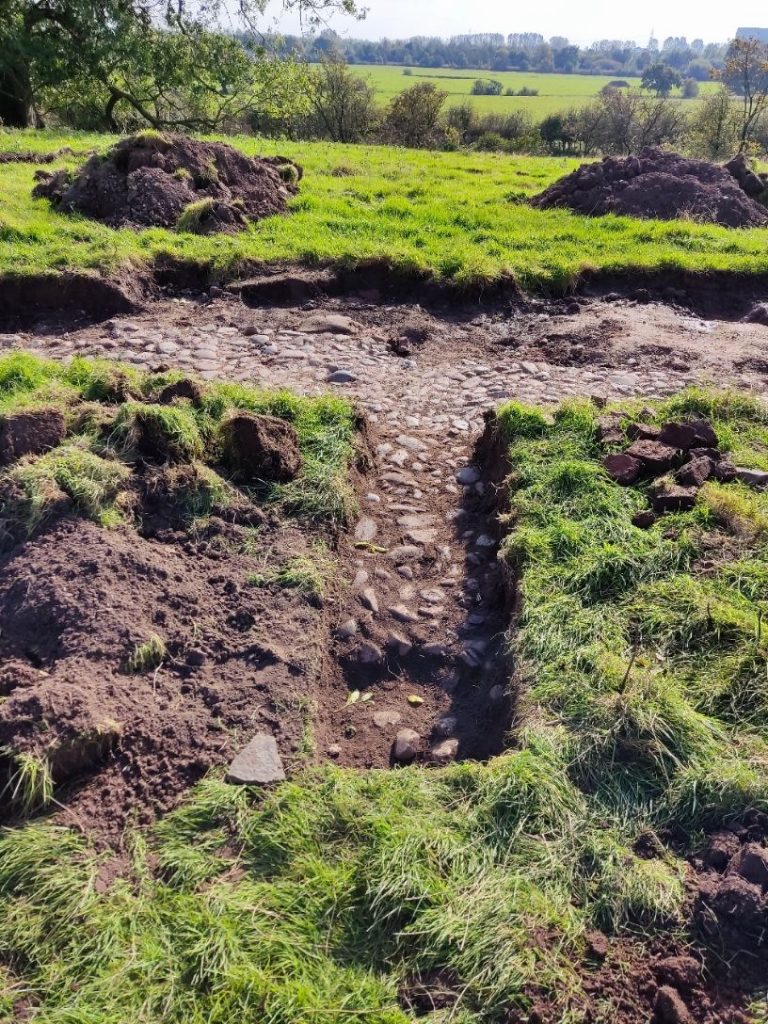
At the end of the day we have an image of Jennifer pointing out to Andy how to produce a neat and tidy trench.
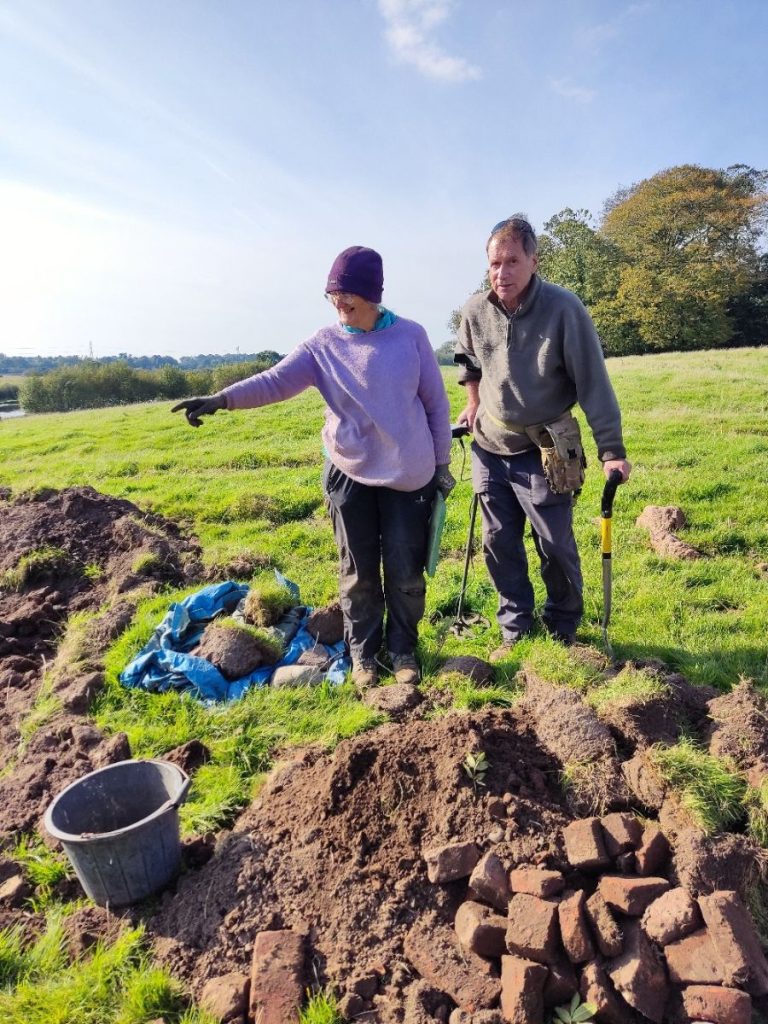
On the eastern side of the site the cobbles seemed to be faced with larger stones.
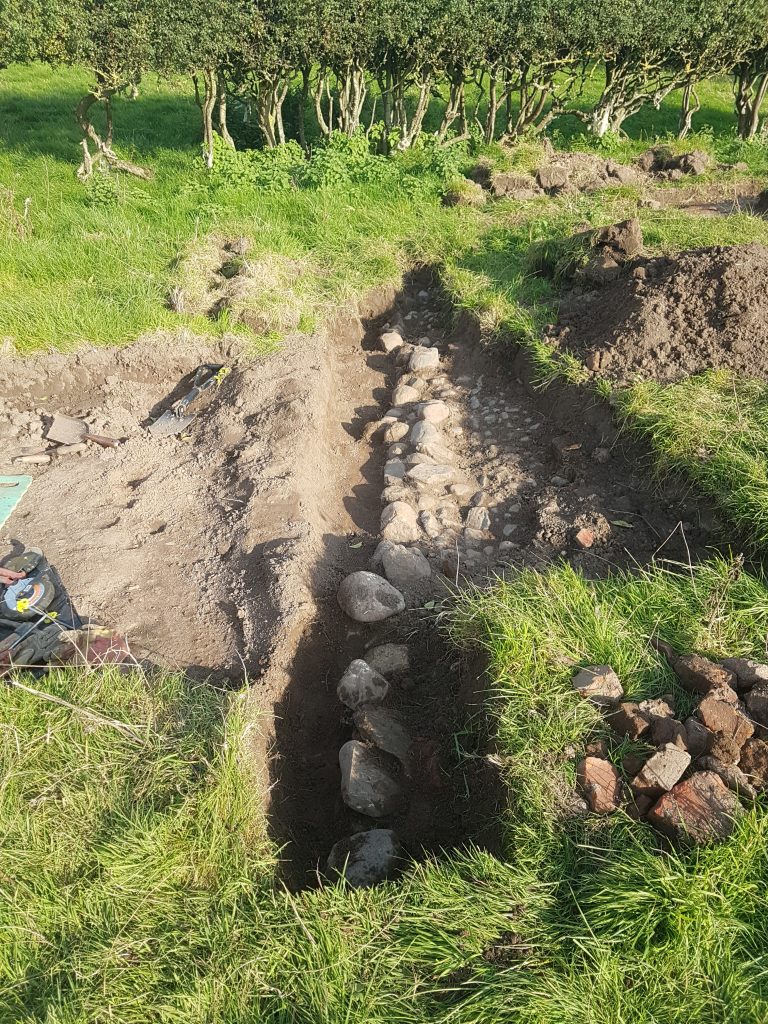
Part of a brick wall/foundations attracted our attention because of the slight curve. Shown below. It looks like, with the hall being built on sandy subsoil, there has been quite a lot of movement.
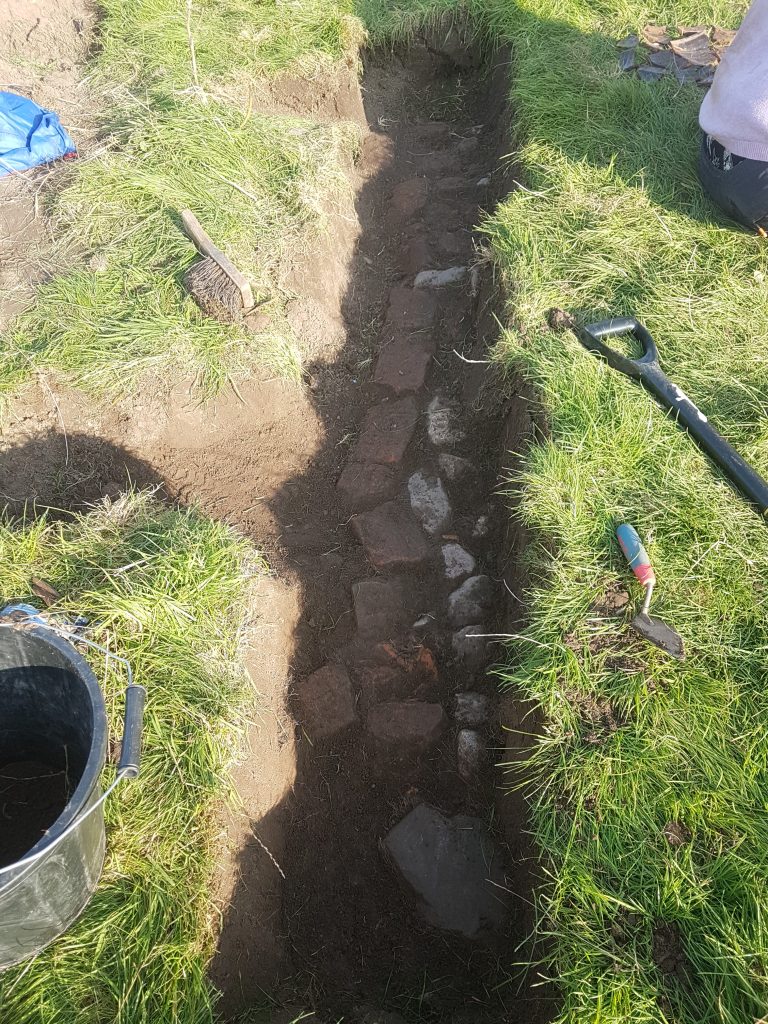
24th September – Update
Simon investigated the site on the 23rd to try to determine the extent of the site. When the diggers arrived the cobbled area was extended to the east. More substantial brickwork then appeared.
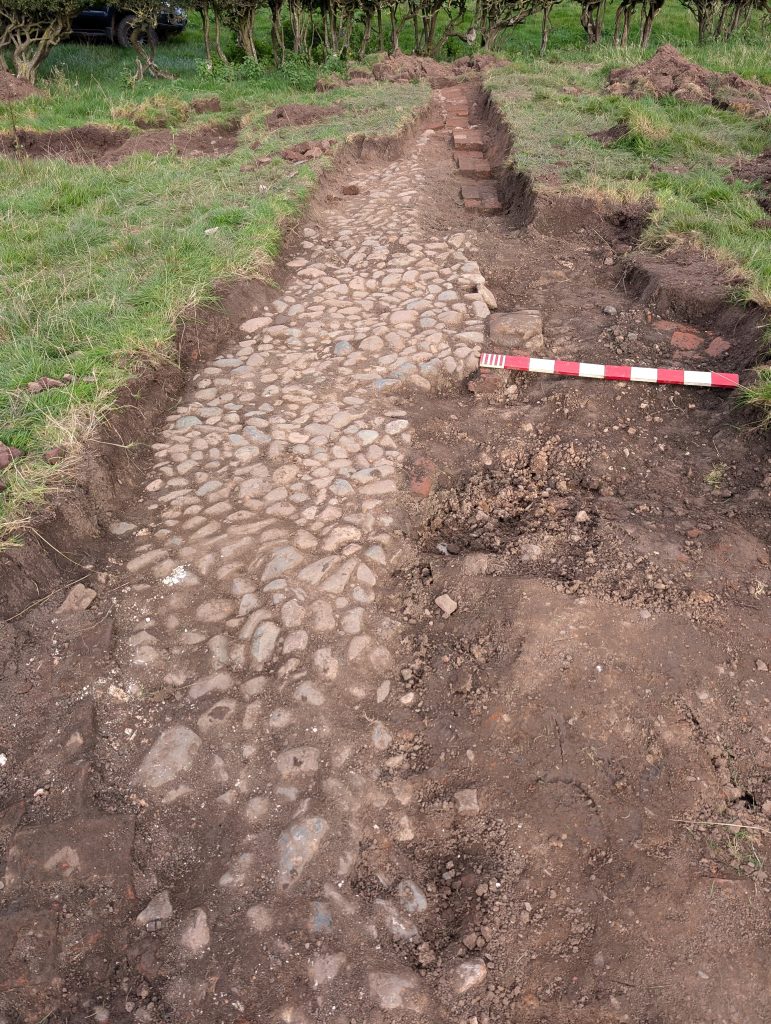
Either the brickwork had been robbed out the wall ended before reaching the photographer’s position.
The following image shows the wall butting up against the cobbles – but which side was inside and which was outside? The visible portion of the wall was only a couple of bricks deep and seemed to built on clay.
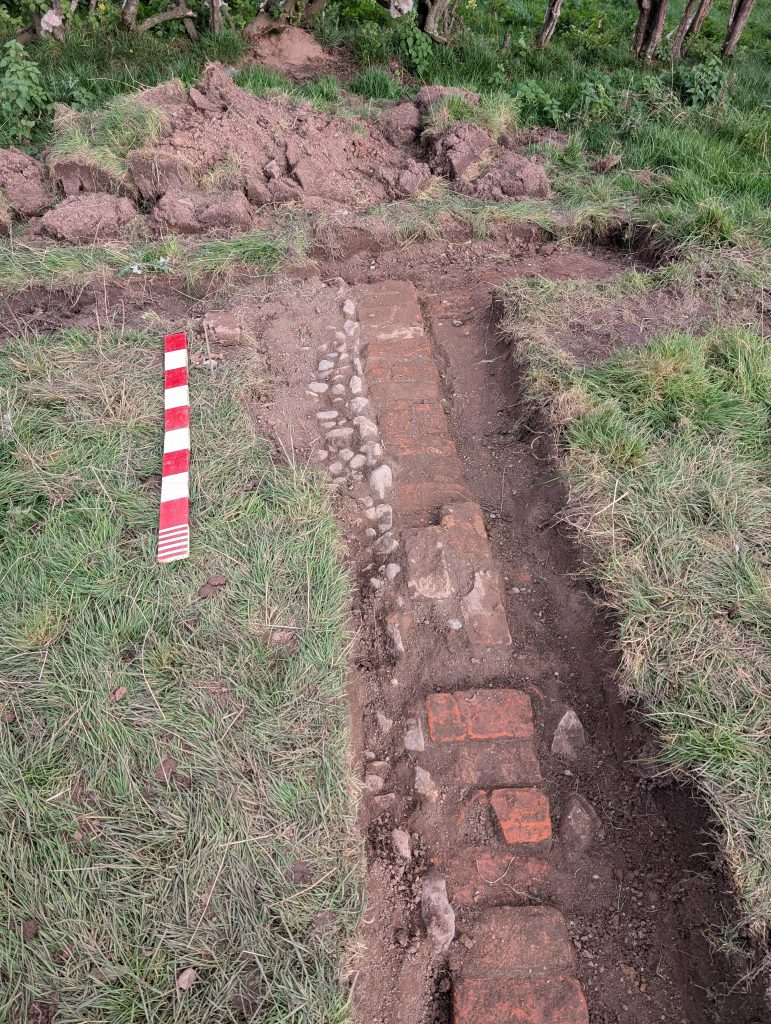
Since the mechanical digger was still available to us the semicircular feature was reinvestigated. Even more confusing. The trench shown below was approximately 3m from the original trench. The same kind of cut could be seen. As a personal opinion the word “cut” may not be correct. The feature is NOT continuous and so cannot be any kind of drainage ditch. It looks like holes have been dug at regular intervals; whatever was originally there has been taken away/rotted and then, over a period of time, the hole filled in. More thoughts to follow.
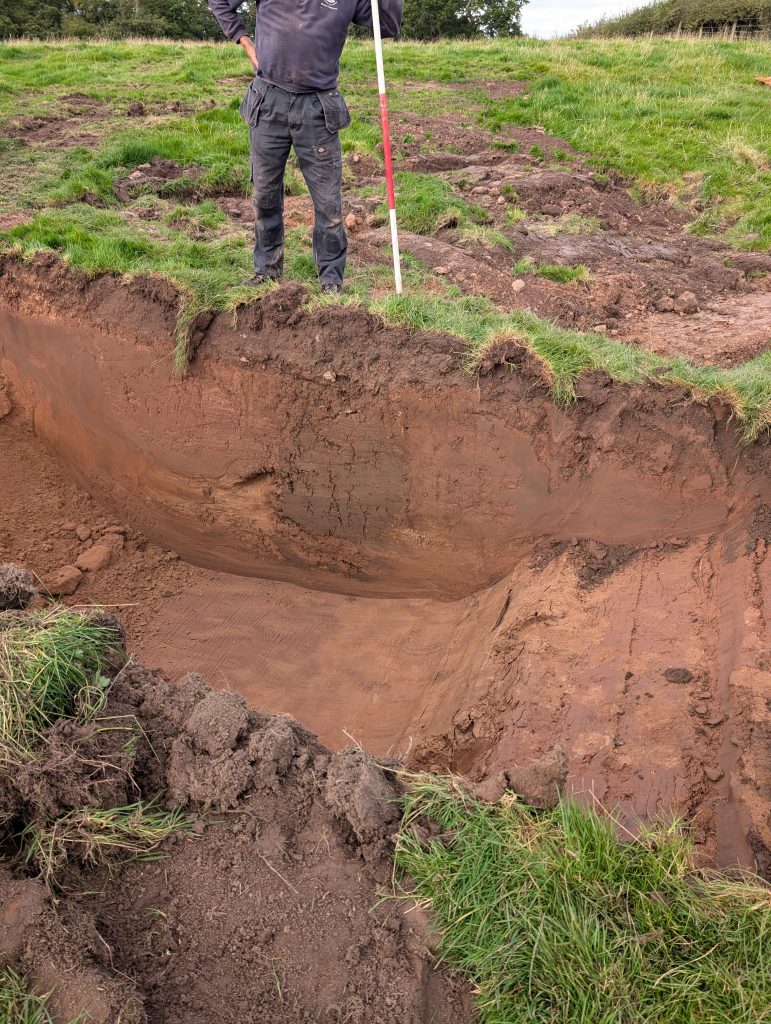
Dig – 21st September 2024
Salwick Old Hall was situated to the east of the present hall and disappeared off the maps in the 1850’s. Wyre Archaeology have visited the site on several occasions but the latest investigation will concentrate on a semi-circular feature discovered by our GPR survey. This feature is approximately 1.0m to 1.4m below the present ground level.
One of the major problems with trying to identify the semicircular feature at Salwick Old Hall has been the depth of excavation. Thanks to the goodwill of Pete Marquis a mechanical digger was provided to assist us. I wasn’t the only one surprised to see the size of the digger.
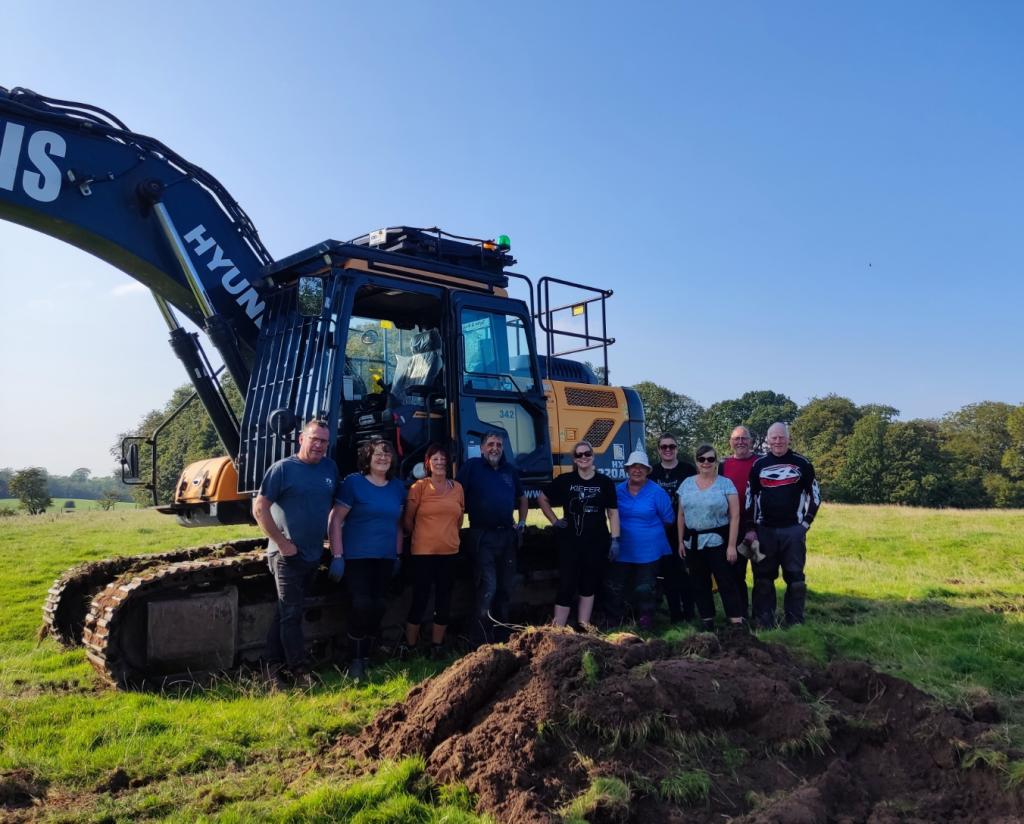
Our thanks also go to Duncan (far left) for his assistance in driving the digger. The image below illustrates that there had been a “cut” into the soil. Our original thoughts that we might have come across a neolithic/bronze age feature were soon dispelled when fragments of brick appeared at the bottom of the cut.

The next image shows the feature starting to completely disappear from the trench at around 1.3m.
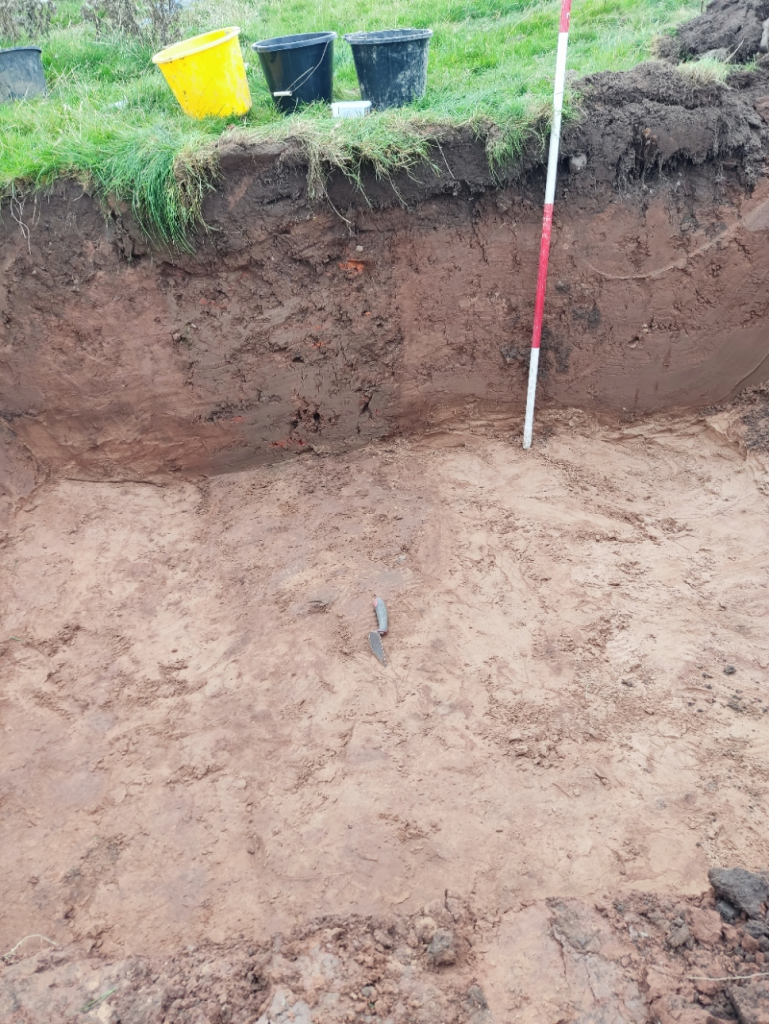
We will probably never know the age or the reason for this cut – the semicircular shape was even more confusing. The image below shows the cut on either side of the trench.

Postscript: It was decided that a couple of days later the team should return and open up another trench further round the semicircle to make sure that the cut continued. Will report later.
After this slight disappointment we moved on to investigate the Old Hall itself. Quickly we came down onto a cobbled surface at around 15cm.

Even more pleasing was the discovery of more substantial foundations and footings for door jambs.

Another set of footings appear in a very substantial piece of stone.
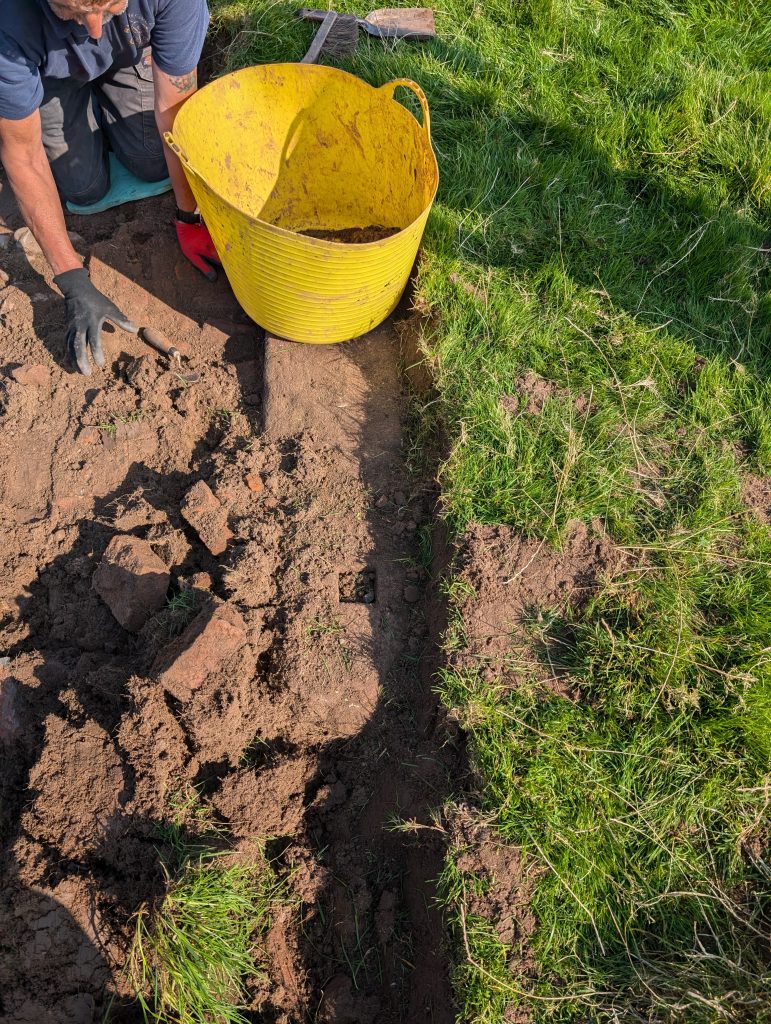
We shall return.
